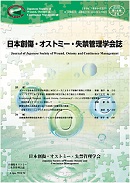Volume 25, Issue 4
Displaying 1-7 of 7 articles from this issue
- |<
- <
- 1
- >
- >|
Original Article
-
Article type: Original Article
2022Volume 25Issue 4 Pages 665-676
Published: 2022
Released on J-STAGE: January 24, 2022
Download PDF (1197K) -
Article type: Original Article
2022Volume 25Issue 4 Pages 677-688
Published: 2022
Released on J-STAGE: January 24, 2022
Download PDF (889K)
Case Report
-
Article type: Case report
2022Volume 25Issue 4 Pages 689-696
Published: 2022
Released on J-STAGE: January 24, 2022
Download PDF (781K) -
Article type: Practice Report
2022Volume 25Issue 4 Pages 697-702
Published: 2022
Released on J-STAGE: January 24, 2022
Download PDF (1536K)
Practical Report
-
Article type: Practical Report
2022Volume 25Issue 4 Pages 703-709
Published: 2022
Released on J-STAGE: January 24, 2022
Download PDF (1116K)
Study protocol
-
Article type: Study protocol
2022Volume 25Issue 4 Pages 710-716
Published: 2022
Released on J-STAGE: January 24, 2022
Download PDF (633K)
-
2022Volume 25Issue 4 Pages 0
Published: 2022
Released on J-STAGE: January 24, 2022
Download PDF (228K)
- |<
- <
- 1
- >
- >|
